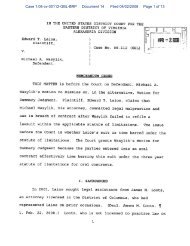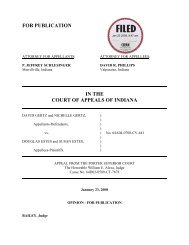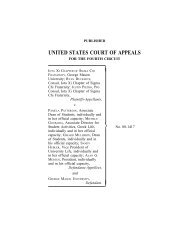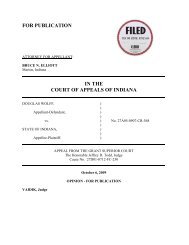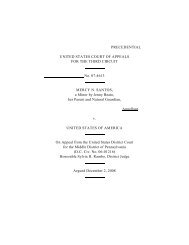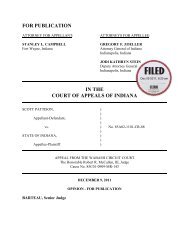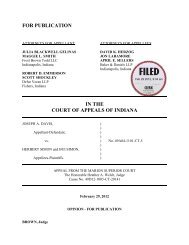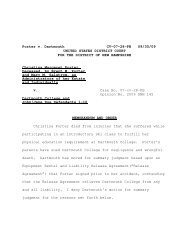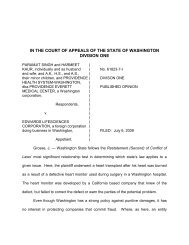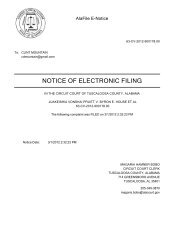IN THE COURT OF APPEAL OF THE STATE OF ... - FindLaw
IN THE COURT OF APPEAL OF THE STATE OF ... - FindLaw
IN THE COURT OF APPEAL OF THE STATE OF ... - FindLaw
Create successful ePaper yourself
Turn your PDF publications into a flip-book with our unique Google optimized e-Paper software.
Ordog sought to testify that Dee‟s exposure to mold in unit 307 caused her<br />
ailments. According to Ordog, as a result of mold exposure, Dee suffered an<br />
increased risk of developing all kinds of cancer and was at an even greater risk of<br />
developing lung cancer and cervical cancer. Ordog opined that mold exposure<br />
caused Dee mental deficiencies, including dementia, memory loss, migraine<br />
headaches, and toxic leukoencephalopathy (a poisoning of the white matter of the<br />
brain). Ordog intended to testify that, as a result of Dee‟s exposure to mold, she<br />
suffered abdominal pain and gastrointestinal bleeding, irritable bowel syndrome,<br />
fibromyalgia (chronic joint and musculoskeletal pain), and chronic fatigue immune<br />
deficiency syndrome. Ordog further concluded that Dee suffered from dyspnea<br />
characterized by difficulty breathing and reactive airway disease as a result of<br />
mold exposure. In addition, he explained, as a result of her mold exposure, Dee<br />
suffered from multiple chemical sensitivities and an infection in her nails, and skin<br />
rashes. He concluded that her high ELISA test for mycotoxins indicated that if she<br />
conceived a child, the child was at risk for birth defects.<br />
Ordog‟s assumptions were challenged on cross-examination. Most<br />
significantly, Ordog acknowledged that no mycotoxin was found in unit 307 at the<br />
time Dee was living there. Specifically, Ordog admitted that trichothecene,<br />
aflatoxin, and satratoxin were not identified on the premises between January 1,<br />
2001 and June 5, 2001. 3<br />
Based on section 801, the court excluded evidence of a causal connection<br />
between toxic mold and cancer. “[H]is testimony at the 402 hearing . . . was<br />
conclusive that he has no sufficient evidence of a causal connection.” The court<br />
3 Ordog indicated that Dee probably ingested mycotoxins in her food because it was<br />
stored and prepared in a contaminated area, and he believed the bread she ate was<br />
contaminated because it was in a contaminated apartment. However, on crossexamination,<br />
he acknowledged that he did not know if she ate bread.<br />
6



